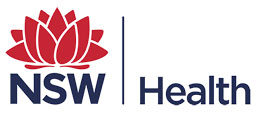Searching for health information?
Here’s some tips and tools to evaluate your way through the information jungle and link to better information
Are you looking for health information for your child? Perhaps you are creating a service for children or young people or even finding information on how to involve them? Whatever the reason, finding reliable information is important. The internet can be a “jungle” and searching for online information is often time consuming and confusing. The information age and deluge of data, means it is becoming harder to separate facts from pseudo-facts. Knowledgeable consumers evaluate information to make good decisions for their health and quality counts.
| Daintree rainforest, north east Queensland |
Families and sharing information
As consumers and healthcare professionals partner in care, health information is shared. Families living with chronic illness, complex health conditions and rare diseases are often experts in their child’s condition. Sharing helpful information and professional-consumer communication is the focus of our blog “K is for knowledge + patient”.
Consumer health information in Australia
Australians search for free, reliable information at HealthDirect (supported by state and Federal governments). The focus is on safe, practical information, including an A-Z of health topics, medicines, symptom checker and service finder. Facts or fiction? has consumer tips on seeking trustworthy online information. Don’t want to read… there’s a helpline to speak to a registered nurse, 24/7 and healthdirect app, which is also free.
Two other resources with “user-friendly” health information are Health information and health products by BetterHealth channel and Raising Children Network. At Raising Children Network find “My neighbourhood”, parents/carers enter their postcode to link to local services and link to intercultural health information.
Evaluating health information – USA
Do you want to Trust it or Trash it? This quality assessment toolbox was created by Access To Credible Genetics (ATCG) Resource Network. There is also a developer toolbox for creating educational resources. MLA, the Medical Library Association, offers find good health information and top health websites.
A useful website? European Commission has a quick checklist for useful websites, with pointers about whether a site is user focused.
Communication between families and health professionals
Access to reliable information should help families and healthcare professionals communicate and make decisions. The ability to ask questions about suggested treatments and procedures is important. Choose Wisely Australia, is an initiative from NPS MedicineWise. Look for 5 questions to ask your doctor.
Questioning quality of information
 |
| The Knowledgeable patient: communication and participation in health. Edited by Sophie Hill available at AWCH library 613 HIL 1 |
Infographics
Organisations and government bodies create infographics, apps and digital technology to promote health information. Reliable information, based on children, young people and family needs, must under-pin any user-friendly format. How can children and young people be involved in creating something that makes sense to them? Investing in Children is one organisation that created films to celebrate their work on child rights and services based on the needs of children and young people.
Linking people + digital information
Whether searching via google scholar, government websites or databases (via libraries or health portals), journeying through the “information jungle” is challenging. Healthcare professionals and consumers link in the lookout for helpful information for healthier lives.
Health literacy
Health literacy refers to the ability individuals and communities have to engage with information and services. Visit the OpHeLia project, Deakin University, for information on health literacy.
Meaningful information is not just something we locate. Useful information is developed when individuals and community are involved and real needs are identified.
The Australian Digital Health Agency has conducted a survey to find out how Australians engage with digital services and access information to improve their health and wellbeing. The National Digital Health Strategy is underway. Emphasis is placed on families and individuals, with the slogan “Your health. Your say.”
Consumer Health Forum highlights the value of health literacy in their submission on the National Digital Health Strategy. People need to find, understand and use health-related information and services, to make good decisions about their health. Find out more in their “response to questions for healthcare consumers, carers and families”, p 6.









